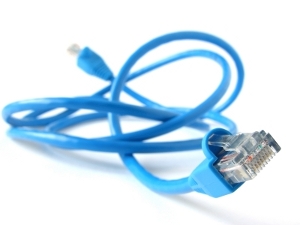|
|
|
|
In this edition of Views and News, ETI examines the economics of switching to SIP-based telephone service. We also delve deeper into the US Supreme Court Concepcion decision and its impact on wireless customers. Finally, the FCC's most recent CMRS report on wireless competition shows that market concentration remains high.
Read on below, or navigate over to
econtech.com
where you can read online, or download a
printer-friendly version.
|
|
Understanding the economics of IP-based voice telephone services
|
|
 A great deal of attention in recent years has been directed at the large-scale "cord cutting" by residential telephone consumers as they abandon their traditional wireline local phone service and become "wireless-only" households. The Center for Disease Control and Prevention (CDC) has been tracking this trend for a number of years, and in the most recent CDC study it estimated that some 26.6% of US households were relying upon wireless for their primary residential phone service. FCC data indicates that between June 2005 and June 2009, the number of (ILEC+CLEC) wireline residential exchange service connections had dropped from 111.7-million to 92.9-million.
A great deal of attention in recent years has been directed at the large-scale "cord cutting" by residential telephone consumers as they abandon their traditional wireline local phone service and become "wireless-only" households. The Center for Disease Control and Prevention (CDC) has been tracking this trend for a number of years, and in the most recent CDC study it estimated that some 26.6% of US households were relying upon wireless for their primary residential phone service. FCC data indicates that between June 2005 and June 2009, the number of (ILEC+CLEC) wireline residential exchange service connections had dropped from 111.7-million to 92.9-million.
Business use of wireless services has also grown rapidly but, unlike residential, business "cord-cutting" is far more limited. In June 2005, there were roughly 66-million (ILEC+CLEC) wireline business exchange service lines in place; by June 2009 that figure had decreased only slightly, to 63.7-million. But is this drop in business access line demand also due to migration to wireless, or is there something else going on here? Indeed there is.
Traditional circuit-switched business exchange service is being replaced by IP-based voice telephone offerings that "ride" on the customer’s broadband connection, often the same or a similar one that is used to obtain Internet access. "SIP" (Session Initiation Protocol) is used to provide Voice over IP (VoIP) signaling, facilitating telephonic connections over IP-based networks (such as the public Internet) much as Signaling System 7 (SS7) supports an analogous set of functions in the circuit-switched Public Switched Telephone Network (PSTN). SIP supports the same types of calling features found in traditional telephone systems (plus some additional ones), but operates as a peer-to-peer protocol that can support non-voice communications applications as well. SIP-based services provide a functional alternative to traditional PBX trunks and Centrex lines, and enable business multiline users to "cut the cord" with respect to their telco-provided services just as residential consumers can abandon wireline in favor of wireless.
Continue reading at econtech.com
|
|
How far does Concepcion actually go in blocking consumer class action cases against wireless carriers?
|
|
 At first glance, it appeared that the April 27 US Supreme Court decision in AT&T Mobility LLC v. Concepcion had broadly eliminated the ability of consumers to bring class action lawsuits in situations where mandatory arbitration clauses and class action waivers are included in customer contracts (Views and News, April 2011). If you ask those wireless service providers whose form Customer Service Agreements contain such provisions, that’s certainly what they’ll tell you. But does the Supreme Court ruling actually go as far as the wireless carriers contend?
At first glance, it appeared that the April 27 US Supreme Court decision in AT&T Mobility LLC v. Concepcion had broadly eliminated the ability of consumers to bring class action lawsuits in situations where mandatory arbitration clauses and class action waivers are included in customer contracts (Views and News, April 2011). If you ask those wireless service providers whose form Customer Service Agreements contain such provisions, that’s certainly what they’ll tell you. But does the Supreme Court ruling actually go as far as the wireless carriers contend?
Continue reading at econtech.com
|
|
FCC issues new wireless market report, declines to find wireless market effectively competitive
|
|
 In the April 2011 Views and News, we reported the wireless market concentration ratios for end-of-year 2008 as provided in the then-latest 14th annual FCC report on CMRS competition. All of the top 30 Economic Area (EA) markets (as measured by subscriber counts) were either "highly concentrated" or "moderately concentrated" as defined by the DOJ/FTC Horizontal Merger Guidelines (HMG). The FCC has just released its 15th annual report on CMRS competition that provides market concentration data for end-of-year 2009. This new data is particularly relevant in light of the pending AT&T/T-Mobile merger. Overall, there has been little change in the reported HHIs for 2008 and 2009. One "Moderately Concentrated" market – Portland, Oregon – crossed the HMG’s "Highly Concentrated" threshold of 2500, and one Highly Concentrated market – Philadelphia – inched below the 2500 threshold to become "Moderately Concentrated." The status of the remaining 28 remained unchanged.
In the April 2011 Views and News, we reported the wireless market concentration ratios for end-of-year 2008 as provided in the then-latest 14th annual FCC report on CMRS competition. All of the top 30 Economic Area (EA) markets (as measured by subscriber counts) were either "highly concentrated" or "moderately concentrated" as defined by the DOJ/FTC Horizontal Merger Guidelines (HMG). The FCC has just released its 15th annual report on CMRS competition that provides market concentration data for end-of-year 2009. This new data is particularly relevant in light of the pending AT&T/T-Mobile merger. Overall, there has been little change in the reported HHIs for 2008 and 2009. One "Moderately Concentrated" market – Portland, Oregon – crossed the HMG’s "Highly Concentrated" threshold of 2500, and one Highly Concentrated market – Philadelphia – inched below the 2500 threshold to become "Moderately Concentrated." The status of the remaining 28 remained unchanged.
Continue reading at econtech.com
|
|
|
|
About ETI. Founded in 1972, Economics and Technology, Inc. is a leading research and consulting firm specializing in telecommunications regulation and policy, litigation support, taxation, service procurement, and negotiation. ETI serves a wide range of telecom industry stakeholders in the US and abroad, including telecommunications carriers, attorneys and their clients, consumer advocates, state and local governments, regulatory agencies, and large corporate, institutional and government purchasers of telecom services. |
|
|
|
|